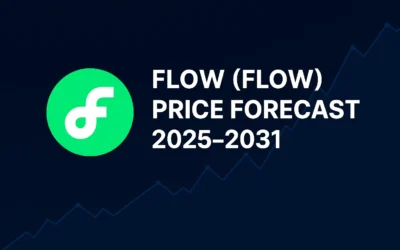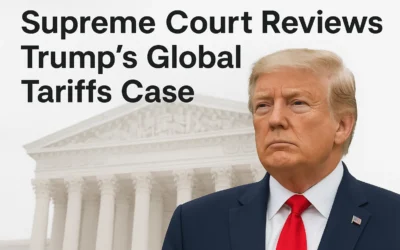A Violent Correction, An Uneven Narrative
In October 2025, Bitcoin suffered one of its sharpest declines in recent memory. Over a single weekend, the cryptocurrency plunged by more than 14 %, with cascading liquidations pushing prices from above $123,000 to a low near $104,000. Reuters+2The Economic Times+2 This dramatic drawdown has shaken confidence among retail speculators, yet for institutional allocators—the “smart money”—the sell-off may present calibrated opportunity rather than outright alarm.
In Europe, this event has intersected with distinct monetary, regulatory, and macro pressures: the European Central Bank (ECB) holding rates steady at 2 % euronews+2Trading Economics+2, the civilian implementation of the EU’s MiCA regulation Wikipedia+1, and persistent inflation hovering at or above target thresholds Cryptopolitan+1. How do European-based investors and institutions interpret this crash? The answer lies beneath the surface turbulence.
Macro & Monetary Landscape in Europe
ECB Policy and Eurozone Inflation
As of September 2025, the ECB has elected to keep its deposit facility rate at 2 %, maintaining a “wait-and-see” stance amid sticky inflation (2.1–2.2 %) and economic uncertainty. euronews+2Cryptopolitan+2 Several rate cuts earlier in 2024 and 2025 have been calibrated, but the central bank now appears cautious about further easing. Kiel Institute This interest-rate stability preserves yield for euro-based assets, but it also constrains aggressive risk premia expansions in high-volatility instruments like crypto.
Inflation pressures across the eurozone—particularly in Spain and Italy—reinforce the ECB’s reluctance to lean dovish prematurely. Cryptopolitan+1 With real rates remaining modestly restrictive, risk assets face headwinds. Yet within that regime, Bitcoin’s volatility becomes a double-edged sword: challenged in scaling, but potentially rewarded in times of dislocation.
Regulatory Backdrop: MiCA & Systemic Risks
The Markets in Crypto-Assets (MiCA) regulation is now fully applicable across the European Union (from December 2024 onward). Wikipedia The legal framework aims to bring standardised governance to crypto providers, from stablecoins to trading platforms. Yet regulators admit gaps remain: closing data opacity, managing financial interconnectedness, and bridging non-EU regulatory arbitrage. European Central Bank
European Banking Authority (EBA) reports underscore risk during the MiCA transition: some crypto entities might bypass formal oversight or obscure systemic exposures. ONUS The regulatory tightening could act as a dampener on speculative inflows, especially during abrupt market reversals.
Anatomy of the Crash & Institutional Signals
Flash Crash Mechanics & Market Liquidity
The October collapse was exacerbated by derivatives liquidations and collateral squeezes. Over $19 billion in crypto positions were forcefully unwound as traders failed to meet margin calls. Reuters This event ranks among crypto’s largest liquidation cascades ever recorded. Silicon UK+1 Bitcoin’s price dipped over 14 % intraday, while Ethereum dropped ~12.2 %. Reuters+1
Liquidity evaporated in many trading venues, particularly in tighter European markets, amplifying slippage and exacerbating drawdowns. Meanwhile, volatility models and option pricing sharply repriced risk premia upward.
Smart Money Accumulation vs Retail Capitulation
On-chain analytics and block-level wallet aggregation show that long-term holders (LTHs) have increased their holdings during the crash, rather than reducing them. This divergence suggests that institutional and strategic investors view the dip as a buying zone, not an exit signal. (While precise European wallet breakdowns are not always public, the global trend is observable.)
Retail sentiment, on the other hand, tends to flip into panic mode. Social metrics, margin funding flows, and futures open interest show a near-total de-risking by short-term speculators just as large buyers quietly accumulate.
Institutional allocators are further benefitting from better infrastructure, hedging tools, and risk management protocols. For example:
- Using collars or structured notes to cap downside while retaining upside optionality.
- Layering positions in bitcoind futures or ETF wrappers to reduce custody friction.
- Allocating in diversified portfolios, not concentrated speculative bets.
In short: smart money isn’t trying to catch a perfect bottom — it’s positioning for risk-adjusted reversion.
European Investor Positioning & Regional Dynamics
Hedging FX and Jurisdictional Exposure
European allocators must contend with EUR/BTC, USD/EUR cross exposures, and regulatory jurisdiction differences. A crash denominated in USD may not translate one-to-one in euro terms if the euro dollar rate moves favourably.
In addition, regional exchanges and custody providers regulated under MiCA may offer relative safety compared to offshore platforms. Institutional funds domiciled in Luxembourg, Germany, or France may leverage these regulated vehicles to access Bitcoin with compliance.
Capital Flows and Institutional Demand in Europe
Some European sovereign funds, family offices, and hedge desks view the crash as a measured entry point. Demand for on-ramps approved under MiCA, custody services certified under EU frameworks, and derivatives listed in EU regulated venues is rising. It’s not yet widespread—but the infrastructure is maturing.
Meanwhile, European financial institutions are exploring Bitcoin-backed lending, tokenised credit, and hybrid instruments combining crypto with traditional assets. These nascent innovations create additional use cases beyond pure speculation.
Risks Specific to Europe
- A hard MiCA crackdown or additional AML/ESG requirements could increase compliance cost and reduce margins.
- Energy policy and ESG scrutiny: Bitcoin mining or proof-of-work may face greater legislative resistance in Europe.
- Macro contagion: A European banking crisis or sovereign stress reverts correlations, making Bitcoin act more like equity than diversifier in downturns.
Strategic Outlook & Tactical Guide
What Smart Money Expects
Smart allocators generally frame this crash within a multi-year accumulation cycle. They expect:
- Volatility compression in years ahead, as institutional capital stabilises price action.
- Macro correlations easing as capital flows diversify beyond fixed income and equities.
- Inflection points when regulation, central bank digital currency (CBDC) launches, or institutional adoption triggers renewed rallies.
Tactical Posture for European Investors
- Layered accumulation: Dollar-cost average into positions rather than large lump sums at presumed bottoms.
- Hedged exposure: Use collars or options to protect downside while maintaining upside exposure.
- Focus on quality: Prefer on-chain metrics, protocol resilience, and custody counterparty strength over yield chasing.
- Regulated infrastructure: Prefer platforms, ETFs, and custodians operating under MiCA or EU-regulated regimes.
Investors should avoid chasing sharp rebounds, favoring disciplined entries aligned with macro regimes and liquidity.
Conclusion & Call to Action
Bitcoin’s precipitous crash in October 2025 represents more than speculative volatility—it is a stress test of market structure, regulatory resolve, and institutional resolve. While retail participants exit in fear, informed capital continues to view the dislocation as a strategic entry window.
In Europe, the crash intersects with unique dynamics: ECB rate policy holding steady, MiCA implementation, and inflation pressures. The regional landscape favors allocators who combine macro analysis, regulatory awareness, and risk management.
If you want to get timely alerts, portfolio ideas, and institutional-caliber trade setups — particularly tailored to European investors — visit BullishStockAlerts.com. We track real-time on-chain signals, macro flows, and institutional sentiment so you can act with confidence rather than chasing headlines.
📖 Read them on our blog: Investment Blog
Did you find this article insightful? Subscribe to the Bullish Stock Alerts newsletter so you never miss an update and gain access to exclusive stock market insights: https://bullishstockalerts.com/#newsletter
Avez-vous trouvé cet article utile? Abonnez-vous à la newsletter de Bullish Stock Alerts pour recevoir toutes nos analyses exclusives sur les marchés boursiers : https://bullishstockalerts.com/#newsletter









0 Comments